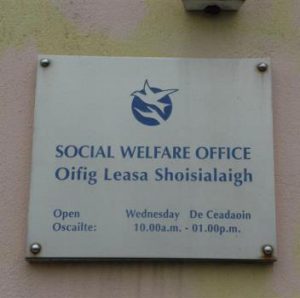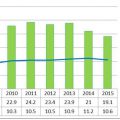
Characteristics of Households with Very Little Work
4 May 2017Key Point
Ireland has the highest share of people living in households with very low work intensity (VLWI)1 in the EU. The attached report by Dr Paul Redmond looks at the characteristics of people in Ireland who live in households with very low work intensity and compares these with other EU Countries.
How does Ireland compare to the rest of the EU?
In this note, we use EU-SILC data to compare the average characteristics of VLWI households and their members to the characteristics of non-VLWI households across 28 EU countries. The full report is here.
The main findings are
- 21 percent of individuals in Ireland were living in VLWI households compared to an EU average of 11 percent.
- 20 per cent percent of VLWI households in Ireland were single parent households, which is the second highest rate in the EU after the UK.
- The percentage of single parent households among the non-VLWI group is much lower in Ireland at 7 percent, however by EU standards this is still quite high with only France, Luxembourg, Latvia and the UK being higher.
- 19 percent of out-of-work members of VLWI households aged over 25 report having never worked, compared to just 11 percent of out-of-work household members in non-VLWI households2
- 40 percent of VLWI household members over 16 years of age reported having a chronic illness compared to just 16 percent of non-VLWI household members. The rates of chronic illness in Ireland, in both VLWI and non-VLWI households, are relatively low compared to other EU countries.
- 20 percent of VLWI household members in Ireland receive disability payments compared to 9 percent of non-VLWI household members. The percentage of non-VLWI members in Ireland in receipt of disability benefit is the highest of all the EU-15 countries and the second highest out of 30 countries. Since 2008 there has been a decline in the percentage of VLWI households claiming disability benefit in Ireland, falling from over 30 percent in 2008 to approximately 20 percent in 2014.
- 38 percent of VLWI household members aged over 25 were educated above secondary level, compared to 63 percent of non-VLWI household members. Ireland stands out as having the most highly educated workforce in the EU as measured by the percentage of over 25’s with a greater than second level education. This is true for both VLWI and non-VLWI groups.
- In Ireland, 47 percent of VLWI households are at risk of poverty compared to 6 percent of non-VLWI households. The risk of poverty among VLWI households in Ireland is approximately equal to the EU average. For non-VLWI households the risk of poverty in Ireland is the 5th lowest out of 30 countries (after Denmark, the Netherlands, Czech Republic and Iceland).
- There is a large difference between Ireland and the EU average regarding the percentage of VLWI household members categorized as being engaged in domestic and care duties (23 percent in Ireland versus an EU-15 average of 14.5 percent). A sizeable proportion of VLWI household members in Ireland are categorized as disabled / unfit to work (15.5 percent) and students (14.6 percent).
_________________________
Notes:
1 Very Low Work Intensity (VLWI) measures people aged 0-59 years old living in households where the adults (those aged 18-591 ) worked less than 20 per cent of their total work potential during the past year.
2 According to the EU-SILC data, having ever worked refers to individuals who have worked on a full-time or part-time basis for at least six months. Holiday work by students from which they return to their studies is disregarded, as is casual work undertaken from time to time.



